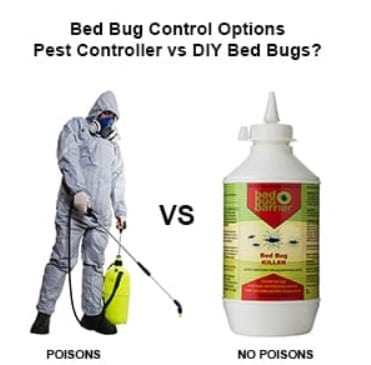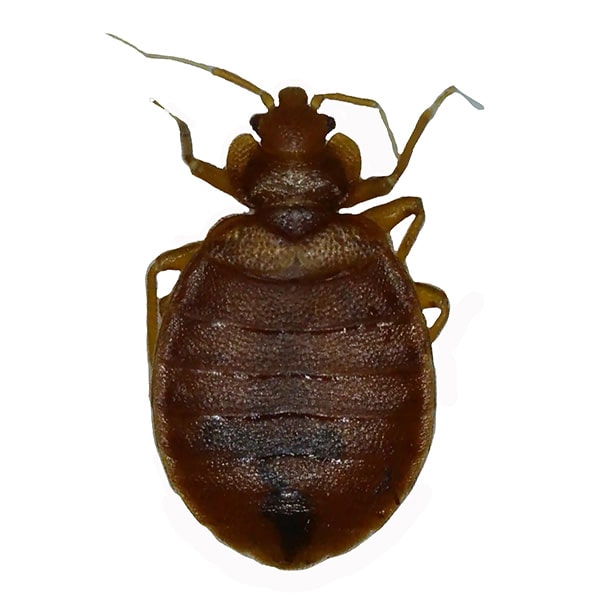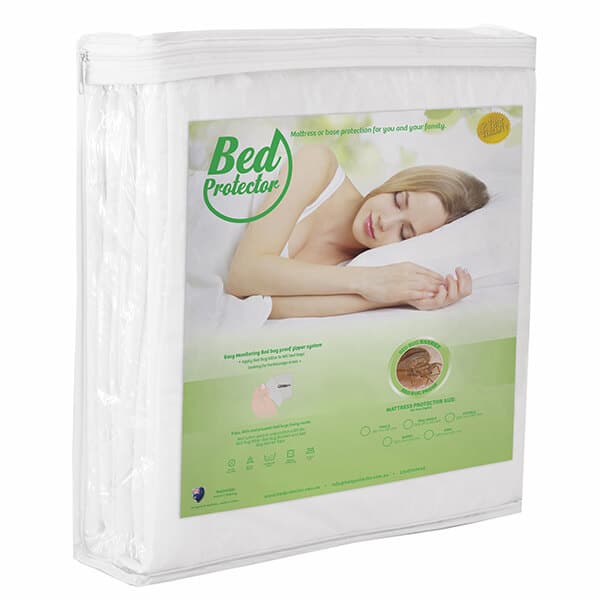
In the article
Bed bugs are more than just an inconvenience; they are persistent pests that can disrupt your peace and comfort at home. While these tiny invaders are notorious for their elusive nature and rapid reproduction, effective bed bug control is within reach for every homeowner.
In this comprehensive guide, we’ll explore various strategies for identifying, treating, and preventing bed bug infestations to ensure your home remains a safe and comfortable haven.
What Are Bed Bugs? An Overview of Bed Bug Control
Bed bugs are small, reddish-brown insects that feed on the blood of humans and animals. They are typically nocturnal and prefer to hide in cracks and crevices during the day, making them difficult to spot.
Understanding the behaviour and biology of bed bugs is crucial in developing an effective control strategy. Bed bugs are resilient and can survive for several months without feeding, so thorough and continuous monitoring is essential.

Adult Bed Bug
Why Bed Bug Control is Essential for Your Home
Bed bug infestations can cause more than just itchy bites; they can lead to significant emotional distress, sleepless nights, and even allergic reactions in some individuals. Effective bed bug control is essential not only to maintain a clean and healthy living environment but also to protect your family from the psychological and physical impacts of an infestation.
Moreover, bed bugs can be particularly problematic for individuals with allergies or asthma, as their presence can exacerbate symptoms.
Signs of A Bed Bug Infestation
How to Identify the Need for Bed Bug Pest Control
Identifying a bed bug infestation early is key to effective control.
Common signs include:
- Small, reddish-brown stains on bedding or mattresses (bed bug excrement).
- Blood spots on sheets from squashed bed bug
- Tiny, pale-yellow eggs or eggshells, about the size of a pinhead.
- Itchy, red bites on the skin, often in a line or cluster.
- A musty odour near the infestation site.
- Live or dead bed bugs.
Regularly inspecting your sleeping areas and furniture can help detect an infestation early, allowing you to act quickly before the problem escalates.
Common Myths About Bed Bug Control
There are numerous myths surrounding bed bug control that can lead to ineffective treatments or prolonged infestations. Some common misconceptions include:
- Myth: Bed bugs only infest dirty homes.
Fact: Bed bugs are not attracted to dirt or grime; they are drawn to warmth, blood, and carbon dioxide. - Myth: Bed bugs can fly or jump.
Fact: Bed bugs cannot fly or jump; they crawl quickly over floors, walls, and ceilings. - Myth: Discarding infested furniture solves the problem.
Fact: While discarding infested items may remove some bed bugs, it is not a guaranteed solution and could spread the infestation further.
Understanding the truth behind these myths is critical for implementing effective bed bug control measures.
Effective Non-Chemical Methods for Bed Bug Control
Non-chemical methods are often the first line of defence in bed bug control, especially in homes with children or pets. These methods include:
- Vacuuming: Regular vacuuming of mattresses, bed frames, furniture, and floors can help remove bed bugs and their eggs.
- Steam: High-temperature steam can kill bed bugs and their eggs on contact. It is particularly effective for treating mattresses, upholstery, and hard-to-reach areas.
- Mattress Encasements: Mattress and base encasements can trap bed bugs inside, preventing them from feeding and eventually causing them to die.
Steam Kills Bed Bugs Instantly – What Our Steamer Kill Hundreds Of Bed Bugs In Seconds
Best Practices for Bed Bug Control
Maintaining good hygiene practices is vital in controlling and preventing bed bug infestations. Regularly washing bedding, curtains, and clothing in hot water and drying them on high heat can kill bed bugs at all life cycle stages. Decluttering your home, especially in the bedroom, reduces hiding places for bed bugs and makes inspection and treatment easier.
DIY Bed Bug Control – Instant & Forever Control
Get Rid Of Bed Bugs Instantly And Long Term With An Organic DIY Treatment.
Step 1: Secure the Mattress
Cover your sleeping mattress with a mattress cover. This will trap and kill by starving them.
Step 2: Treat the Bed Frame
Use a Steamer to steam the entire bed frame to kill them instantly.
Dust the entire bed frame with Diatomaceous Earth (bedbug powder) using a powder duster to kill bed bugs long term.
Step 3: Set Up Barriers or Tape
To protect yourself from bed bugs in the room, use our barriers:
Floor Barriers:
Place bed legs in the Floor Barrier, dusting powder inside the tray and barrier.
Barrier Tape:
For bed legs larger than 65mm, use our barrier tape and dust the powder around the bed leg and floor.
Keep your bed at least 30cm away from walls and other furniture.
Chemical Treatments To Control Bed Bugs: What You Need to Know
When non-chemical methods are insufficient, chemical treatments may be necessary. However, it is crucial to use APVMA registered insecticides specifically labelled for bed bugs.
Always follow the product instructions carefully, and consider hiring a professional pest control service to ensure safe and effective application. Chemical treatments often involve multiple applications and require follow-up inspections to ensure all bed bugs have been eliminated.
How to Implement a Comprehensive Bed Bug Control Plan
A comprehensive bed bug control plan combines multiple strategies for maximum effectiveness. Here’s a step-by-step approach:
- Inspection: Conduct a thorough inspection to identify the extent of the infestation.
- Preparation: Prepare the area for treatment by decluttering, washing linens, and vacuuming.
- Treatment: Steam the bed frame, then dust with Diatomaceous Earth.
- Monitoring: Regularly monitor the treated areas for signs of bed bugs to ensure the infestation is under control.
- Prevention: Take preventive measures to avoid future infestations, such as encasing mattresses and using bed bug interceptors.
Preventing Future Infestations
Long-Term Bed Bug Control Strategies
Prevention is key to long-term bed bug pest control. To minimize the risk of future infestations:
- Avoid bringing second-hand furniture into your home without thoroughly inspecting it.
- Use bed bug-proof encasements on mattresses and bases.
- Regularly inspect your home for signs of bed bugs, especially after travel.
- Maintain cleanliness and reduce clutter to minimize hiding spots.

Control Bed Bugs With A Mattress Encasement
FAQs About Bed Bug Control
- Q: Can bed bugs spread diseases?
A: While bed bugs do not transmit diseases, their bites can cause allergic reactions and infections from scratching. - Q: How long does it take to eliminate a bed bug infestation?
A: Depending on the severity of the infestation and the methods used, it can take several weeks to months to completely eliminate bed bugs. - Q: Are bed bugs only found in beds?
A: No, bed bugs can hide in furniture, clothing, luggage, and even electrical outlets.
Conclusion: Mastering Bed Bug Control for a Peaceful Home
Achieving effective bed bug control requires a multifaceted approach that combines vigilance, thorough cleaning, and professional intervention when necessary. By understanding the habits of bed bugs and implementing both immediate and long-term strategies, you can protect your home and maintain peace of mind.
Remember, prevention is just as important as treatment. Stay informed, stay prepared, and enjoy a bed bug-free home!
Are You Looking for an Organic DIY Treatment?
DIY Bed Bug Control Video For An Ensemble Bed
DIY Bed Bug Control Video For A Bed with Slats
Sources:
Department of Health WA , Oxford Academic (Perspectives on Biology and Management), National Library of Medicine (Clinical Relevance and Control Options )



Leave a Reply